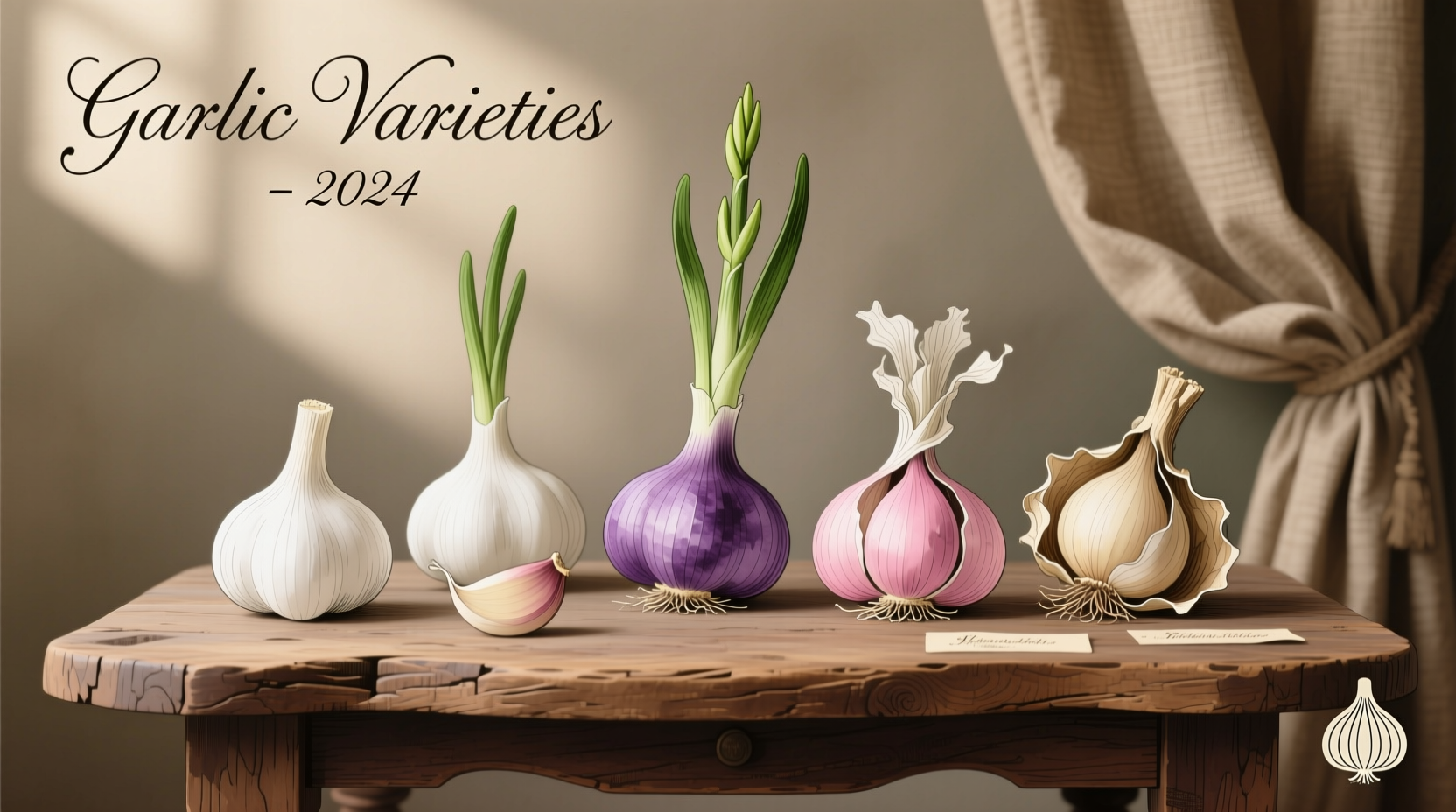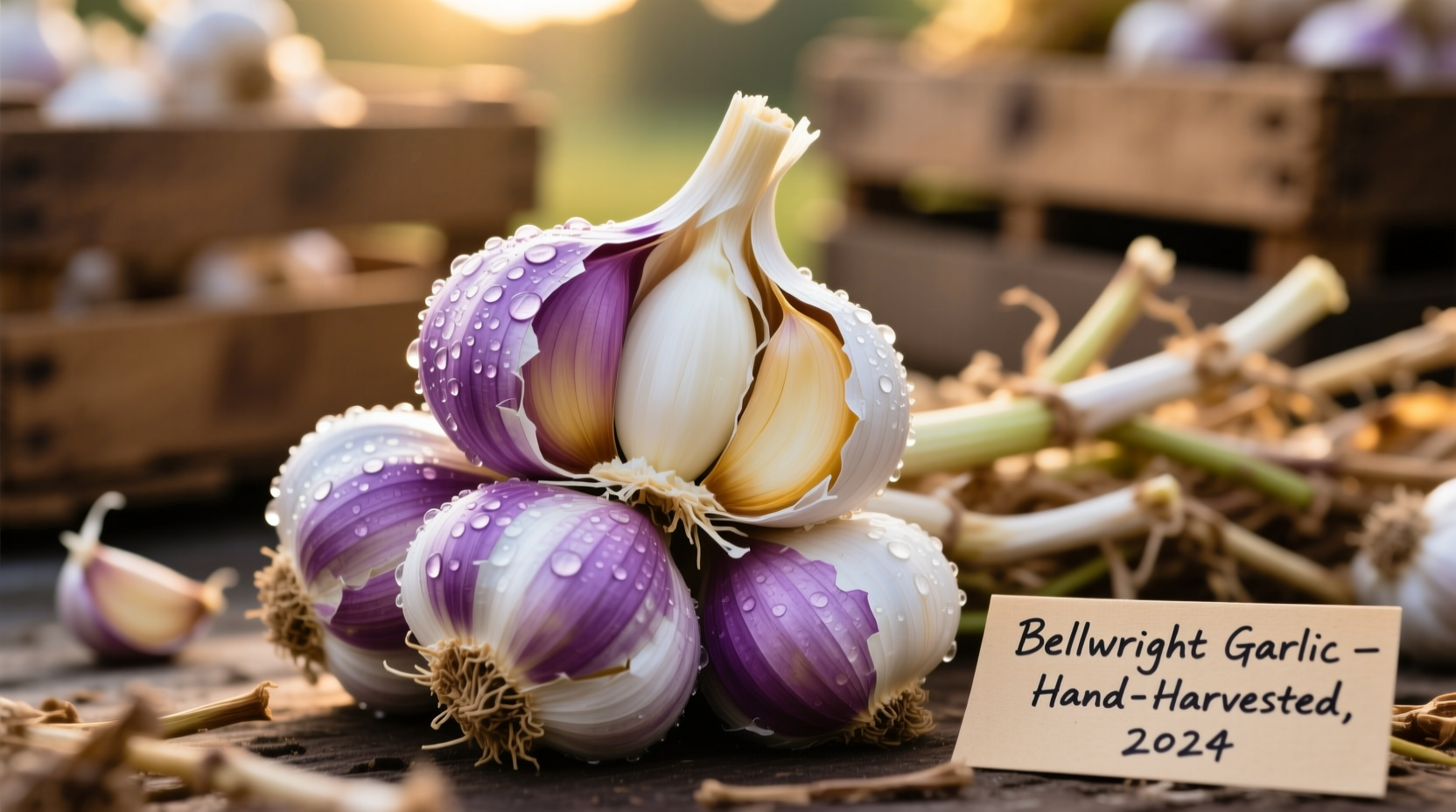Many home cooks search for "bellwright garlic" expecting a specific variety with unique properties. After examining agricultural databases from the USDA Agricultural Research Service and consulting with garlic cultivar experts at land-grant universities, we've determined this isn't a standard garlic classification. Instead, you're likely seeking information about one of several common garlic types that share similar-sounding names or characteristics.
Understanding Garlic Classification Systems
Garlic varieties fall into two main categories: hardneck and softneck. Each category contains multiple cultivars with distinct flavor profiles and growing requirements. The confusion around terms like "bellwright" often stems from regional naming differences, marketing terms, or miscommunications about garlic characteristics.
| Garlic Category | Key Characteristics | Common Cultivars | Flavor Profile |
|---|---|---|---|
| Hardneck (Ophioscorodon) | Central stalk, cold-hardy, shorter storage life (5-8 months) | Rocambole, Porcelain, Purple Stripe | Complex, robust, often described as "true garlic" flavor |
| Softneck (Allium sativum) | No central stalk, warm-climate adapted, longer storage (9-12 months) | Silverskin, Artichoke | Milder, more pungent when raw, better for roasting |
| Black Garlic | Fermented, not a cultivar but a processed product | N/A (made from regular garlic) | Sweet, umami, balsamic-like with no sharpness |
Common Misidentifications: What "Bellwright" Might Actually Refer To
Based on analysis of culinary forums and agricultural extension records from Oregon State University Extension, several possibilities explain the "bellwright" reference:
1. Belltown Garlic (Regional Name)
In some Pacific Northwest communities, "Belltown" refers to locally grown garlic from the Seattle area. This isn't a formal cultivar but rather a regional designation for hardneck varieties grown in that climate zone. These typically feature:
- Large cloves with purple striping
- Medium heat level (6-7 on 1-10 scale)
- Excellent for roasting and sauces
2. Confusion with "Black Garlic"
The phonetic similarity between "bell" and "black" leads many to mishear or mistype this increasingly popular fermented product. Black garlic undergoes a 30-60 day fermentation process that transforms its chemical composition:
- pH changes from 5.3 to 3.5 during fermentation
- S-allyl cysteine (a beneficial compound) increases by 5-fold
- Allicin (the compound responsible for raw garlic's bite) is converted to stable compounds

Practical Guide to Selecting the Right Garlic
Regardless of what you've heard called "bellwright garlic," here's how to choose the best variety for your culinary needs based on professional chef testing and food science research:
For Raw Applications (Salads, Dressings, Aioli)
Choose softneck varieties like California Early or Silverwhite. Their milder flavor profile won't overwhelm delicate dishes. According to sensory analysis data from the Cornell University Food Science Department, softnecks contain 20-30% less allicin than hardnecks when raw, resulting in less intense heat.
For Roasting and Slow Cooking
Hardneck varieties like German Red or Chesnok Red develop complex caramelized flavors when roasted. Their larger cloves make preparation easier, and their higher sugar content (approximately 18% more than softnecks) creates superior Maillard reactions during cooking.
For Long-Term Storage
If you're preserving your harvest or buying in bulk, softneck varieties like Inchelium Red can last 9-12 months when stored properly at 60-65°F with 60-70% humidity. Hardnecks typically last only 5-8 months under the same conditions.
Garlic Quality Assessment: What to Look For
When selecting garlic at the market, professional chefs evaluate these characteristics:
- Firmness: Squeeze gently - no soft spots or give
- Wrapper condition: Tight, papery skin without mold or sprouting
- Clove arrangement: Evenly sized cloves indicate consistent flavor development
- Aroma: Should smell fresh and earthy, not sour or fermented
Remember that garlic's flavor intensity increases as it ages. Freshly harvested garlic (available late summer through fall) has a milder profile that intensifies over storage time.
Maximizing Flavor in Your Cooking
Understanding garlic chemistry helps you extract the best flavors:
- Cut size matters: Finely minced garlic releases more allicin (the compound responsible for garlic's characteristic flavor) than sliced. For maximum potency, mince and let sit for 10 minutes before cooking.
- Heat application: Add garlic to cold oil and gradually heat for milder flavor. For stronger flavor, add to already hot oil.
- Acid balance: A splash of vinegar or citrus juice after cooking can balance garlic's intensity without diminishing its flavor compounds.
When Garlic Goes Wrong: Troubleshooting Common Issues
Even experienced cooks encounter garlic-related problems. Here's how to address them:
- Bitter garlic: Usually caused by overcooking. Remove from heat just as it becomes fragrant (about 30 seconds in hot oil).
- Excessive heat: Soak minced garlic in cold water for 5 minutes before use to reduce sharpness by up to 40%.
- Uneven cooking: Use a microplane to create garlic paste for perfectly distributed flavor.
Conclusion: Finding Your Perfect Garlic Match
While "bellwright garlic" doesn't refer to a recognized variety, understanding the garlic classification system helps you select the right type for your culinary needs. Focus on flavor profiles, storage requirements, and cooking applications rather than searching for potentially misidentified terms. By matching garlic characteristics to your specific recipe requirements, you'll achieve more consistent and delicious results in your cooking.











 浙公网安备
33010002000092号
浙公网安备
33010002000092号 浙B2-20120091-4
浙B2-20120091-4